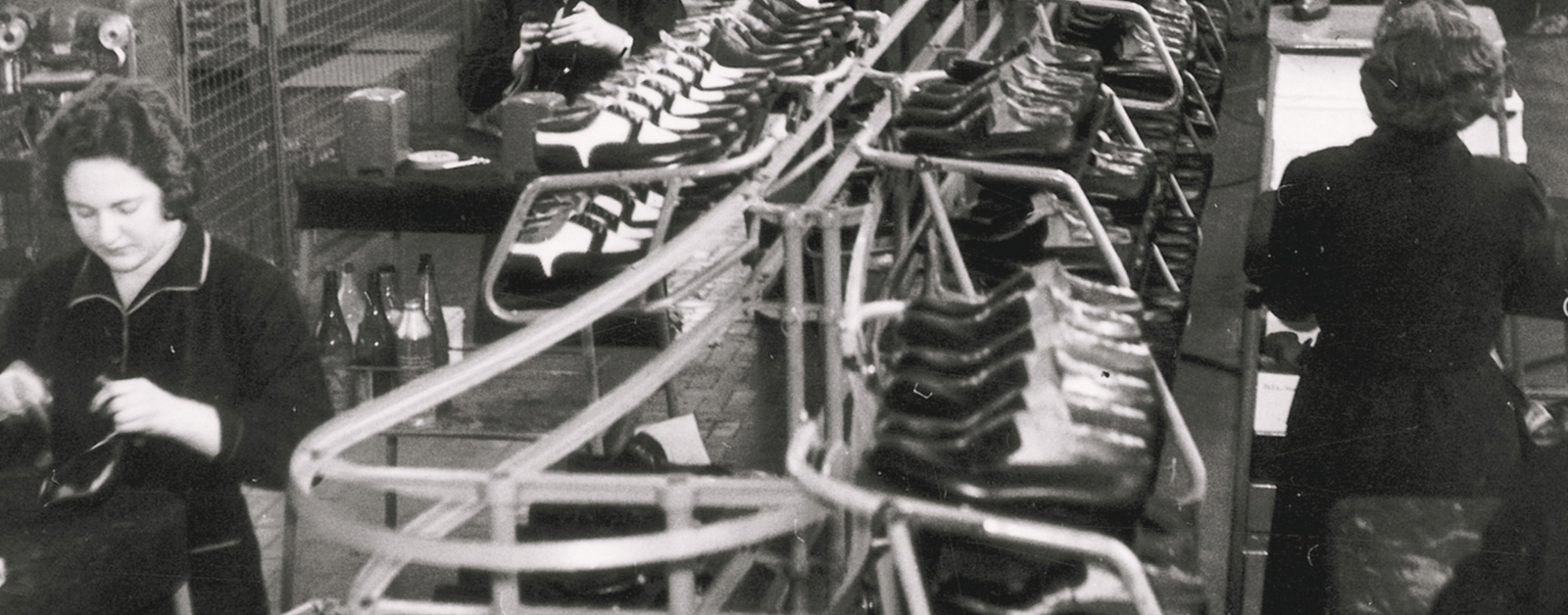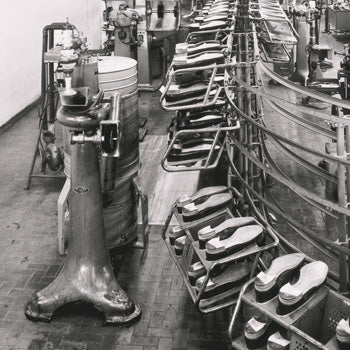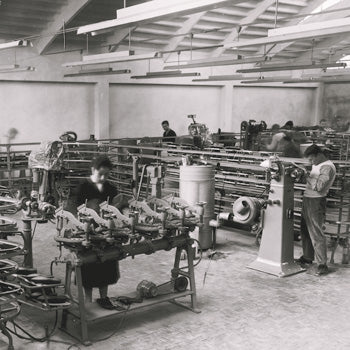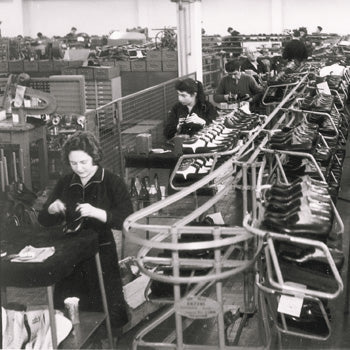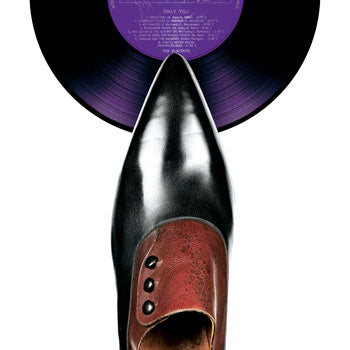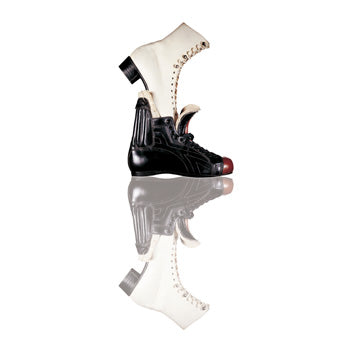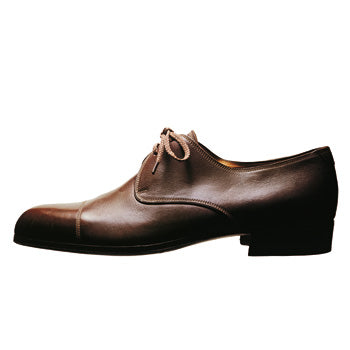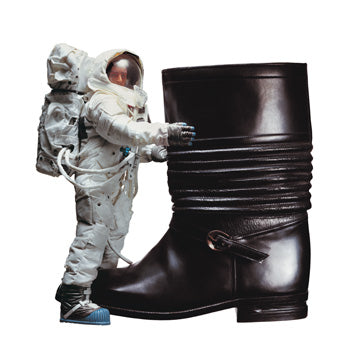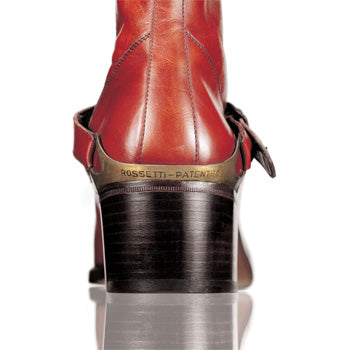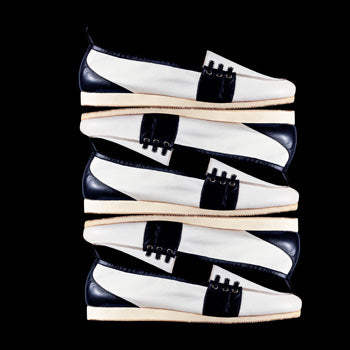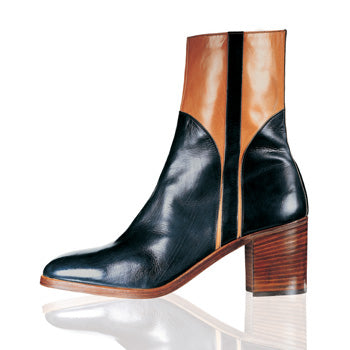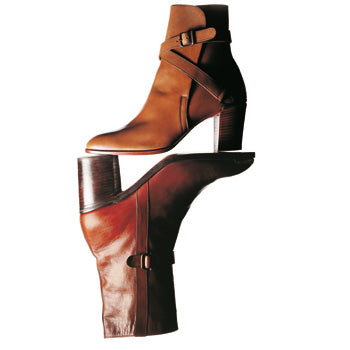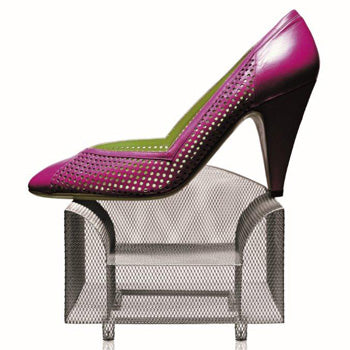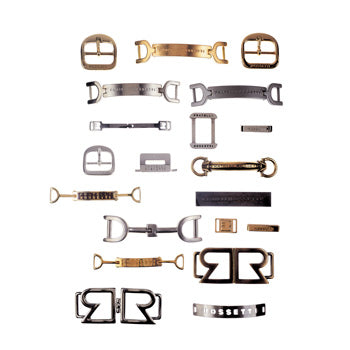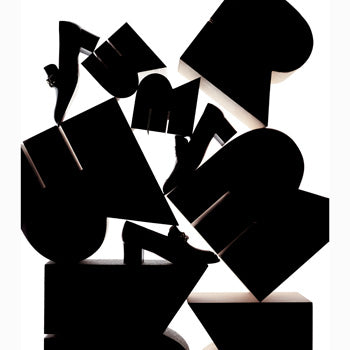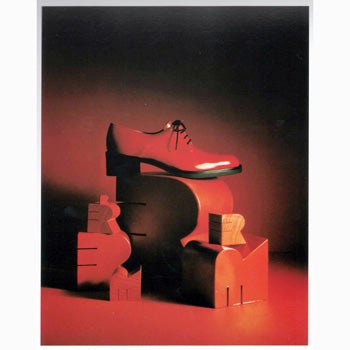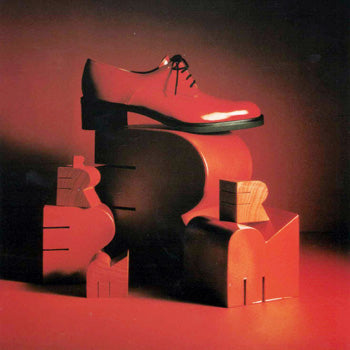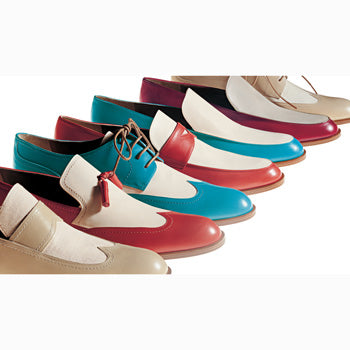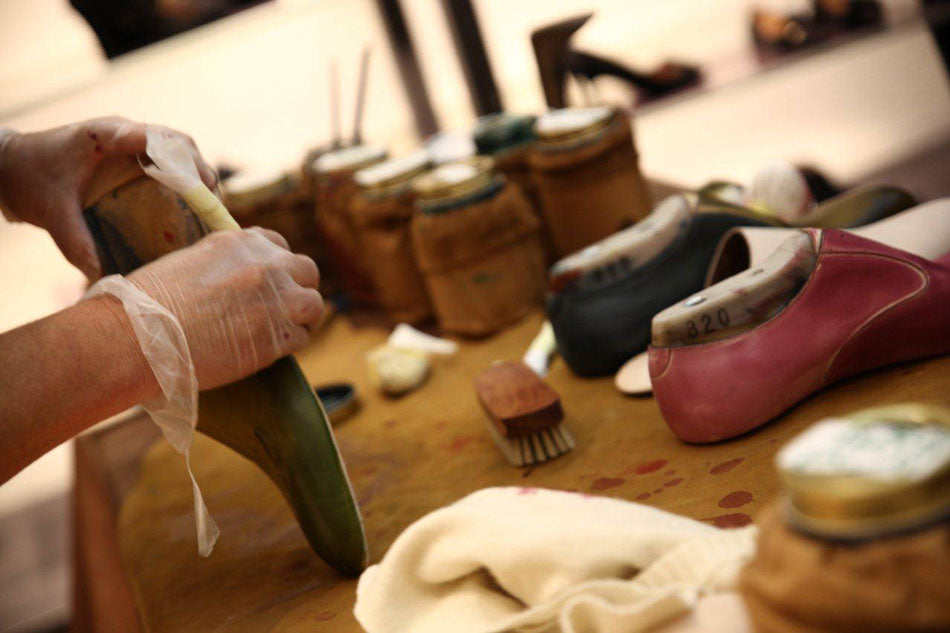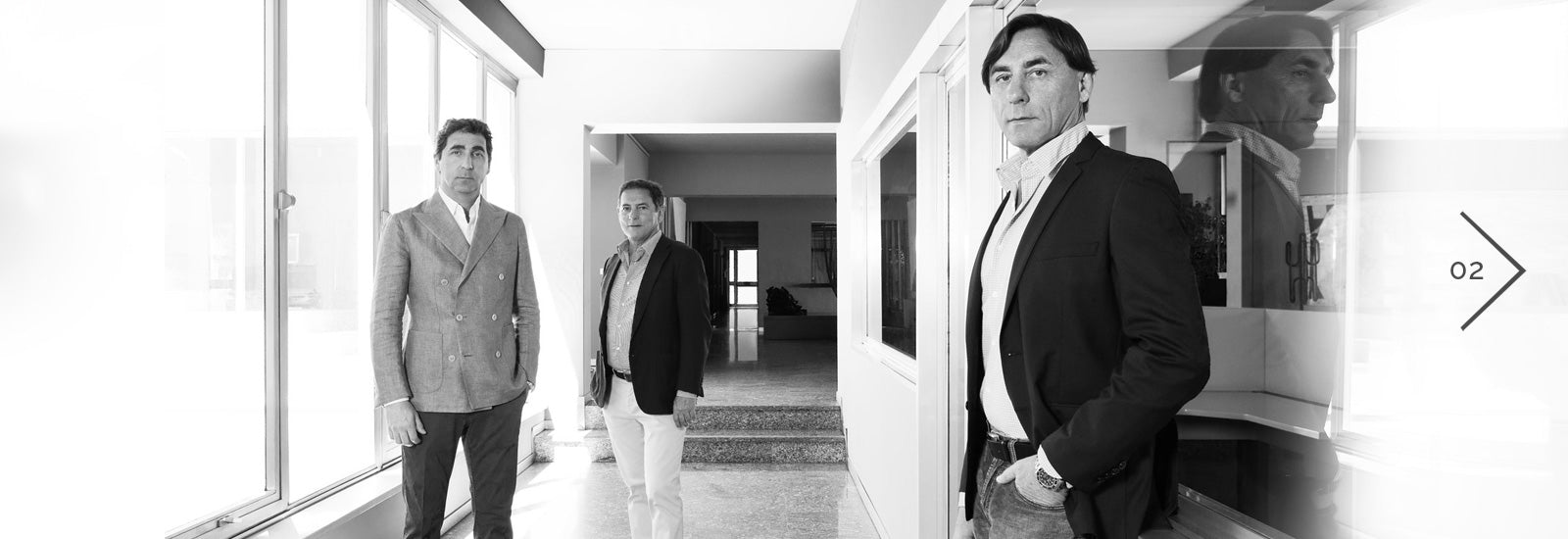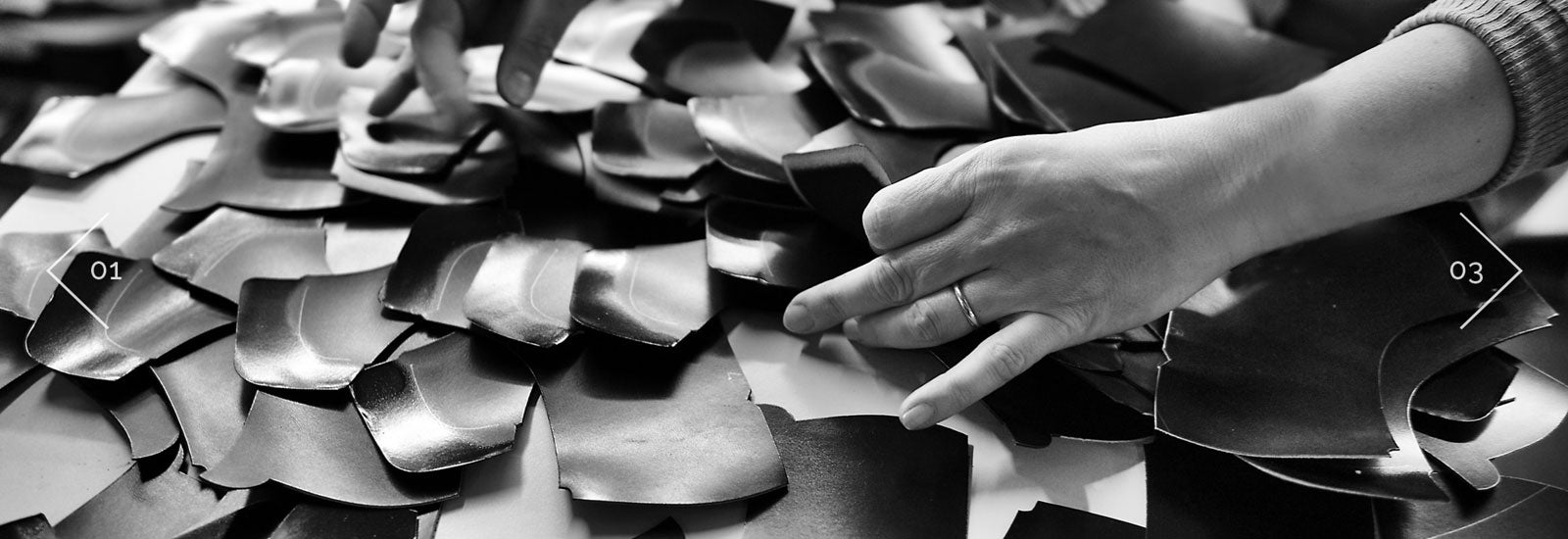40S
RECKLESSNESS
After the end of the war, Europe laboriously returned to normality. These are the years of neorealist cinema, of a rediscovered femininity in fashion, of Frank Sinatra and Humphrey Bogart. The shops are missing everything but ordinary people find incredible resources to cope with the crisis. It was precisely then that a very young Renzo Rossetti and his brothers began, almost by chance, to deal with sports shoes. The unknowns outweigh the certainties but the determination is such that the first shoes produced are worn by Italian figure skating and hockey champions.
“Maybe it was a certain amount of... youthful recklessness that supported us and kept us going. Recklessness? Will? Unable to stop? I've never understood it: probably the three things combined."
